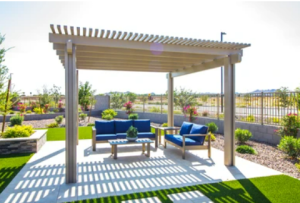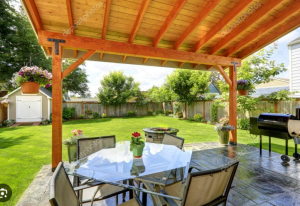
If you are wanting to add some character to your garden, you may want to consider the addition of a pergola. A Pergola offers a great outdoor space for socialising and relaxing. Constructing your own pergola can be a very rewarding project, as you will end up with a structure that can be used and enjoyed by your family and friends. In this article, we will explain the steps you need to follow, to build your own pergola.

Before you start building your pergola, you first need to carefully plan out the design. You must consider the size, location, and the purpose of the pergola. For example, if you are going to install a kitchen in your pergola, then you will need to plan to run power and plumbing to the area. You must also consider factors such as sunlight, wind direction, and overall aesthetic of your outdoor space.
There are a few different types of pergolas. Timber is a very popular choice due to its natural look and durability. Some common woods are cedar, redwood, or treated pine. Once you have decided on your material, you will need to order the necessary amount. If you live in the Salisbury area, you can find Salisbury Timber Merchants who can supply you the exact amount of wood you need. An example of one of these companies is https://www.timbco.co.uk
The first step of building will be to dig holes for your foundations. You will need to dig holes that are big enough to fit your timber posts and deep enough to ensure stability. Use concrete to secure the posts in place and make sure they are all level with each other. Once the posts are in place, you will then need to attach beams across the top of the pergola to create a sturdy framework.

You should consider adding shade capabilities to your pergola. You can install a retractable canopy or latticework. These features will enhance the aesthetics of your pergola. You can also install climbing plants at the bottom of your latticework or posts or hanging flower baskets to add a touch of natural beauty to your pergola.
The last steps will be to add a protective finish to your timber and other wood to ensure its longevity. You can choose a stain or paint that matches your desired aesthetic. Finally, add a sealant to protect the timber from moisture and rot.

